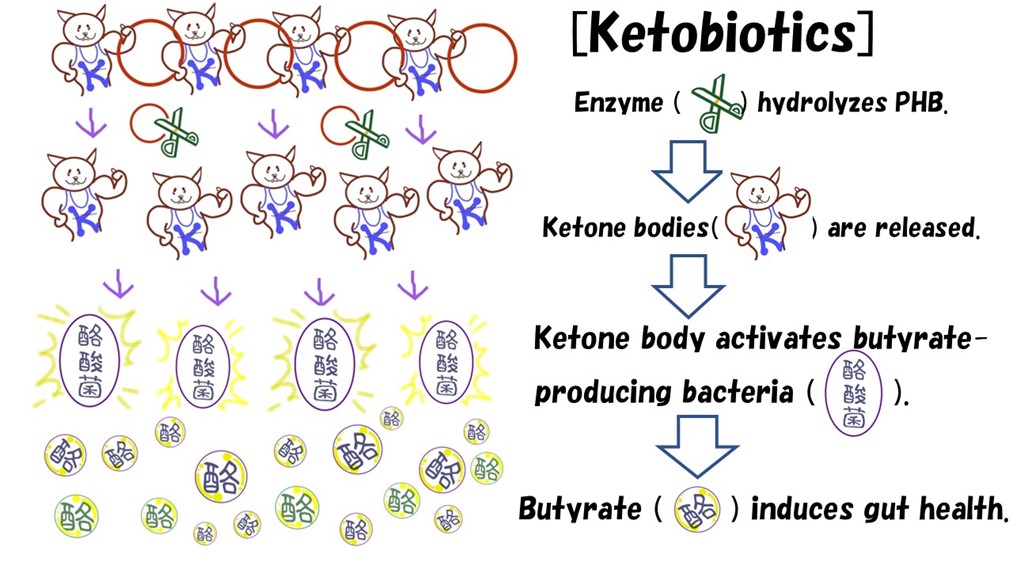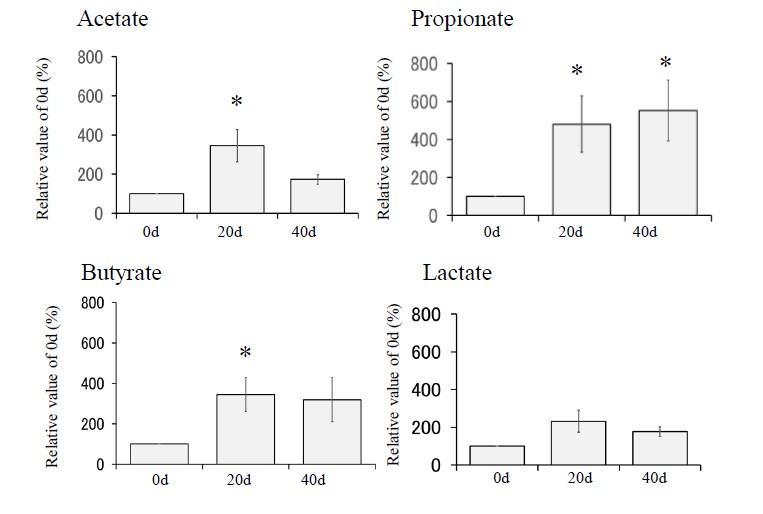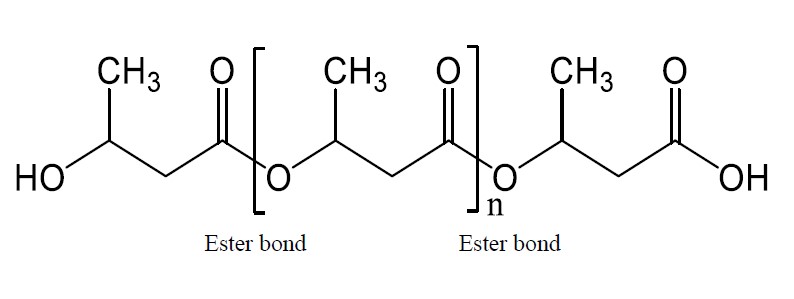HOME > Information > 2022 > KETOBIOTICS: activation of butyrate-producing bacteria by donation of 3-hydroxybutyrate to microbiota

Information
KETOBIOTICS: activation of butyrate-producing bacteria by donation of 3-hydroxybutyrate to microbiota
Dr. Takumi Satoh, Prof. of School of Bioscience and Biotechnology, Tokyo University of Technology in Tokyo, Japan (President: Dr. Yasuhiro Ohyama) has reported that poly-3-hydroxybutyrate (PHB*1), one of the materials of biodegradable plastics, induces a butyrate-producing bacteria-dominant microbiome*2. This may be a novel type of prebiotics that activate butyrate-producing bacteria by donation of ketone bodies leading to gut health (Figure 1). This study was published as a review article in the Journal of Biotechnology and Biomedicine, an open access online journal on Sep 6, 2022 (https://www.fortunejournals.com/abstract/ketobiotics-by-poly3hydroxybutyrate-a-novel-prebiotic-activation-of-butyrateproducing-bacteria-through-3hydroxybutyrate-donation-t-3467.html ).

Background
Dr. Satoh has focused on PHB as a ketone donor to mammals and found that it induces a butyrate-producing bacteria-dominant microbiome and has proposed “KETOBIOTICS” as a new type of prebiotics. Since mammalian digestive enzymes cannot hydrolyze PHB, PHB passes through the small intestine and reaches the large intestine. PHB is hydrolyzed to 3HB by microbiota enzymes. Microbiota can use 3HB as an energy source and enhance the growth of butyrate-producing bacteria. 3HB are released into the colorectal lumen and absorbed into the systematic circulation of mammals. By these events, the concentrations of ketone bodies are increased to some extent in mammals.
Results
Micro-mini pigs*4 at 90d after birth were used for this experiment. PHB (2%) had been administered to them for 40 days. Fecal samples at 0d, 20d and 40d were subjected to measuring of acetate, propionate, butyrate, and lactate by use of high-performance liquid chromatography. Although acetate, propionate, and butyrate were increased in response to PHB addition, lactate was not increased. Nevertheless, pH significantly reduced from 8.2 to 7.4, suggesting that their gut environment had significantly improved. In addition, PHB increased butyrate-producing bacteria such as Rosebria measured by microbiome analysis of mice (Ref 1).

Social and academic points
Microbiome analysis of healthy elderly people revealed that they have significantly more butyrate-producing bacteria (Ref2). In addition, PHB prevented colorectal cancer by promoting a butyrate-producing bacteria-dominant gut environment (Ref 1). By these reports, continuous administration of PHB can contribute to maintaining gut health of pets and industrial animals. In addition, PHB may be used to maintain gut health. Since PHB can donate 3HB to microbiota as energy substrate, Ketobiotics may be able to totally change the microbiome within a short time. In addition, although the physiology of ketone bodies has been limited to mammalians, Ketobiotics may open a new world due to their clear functions in prokaryotes. It is possible that this research is the first step to industrialization of ketone donors.
Technical terms
*1 Poly-3-hydoxybutyrate (PHB): A polyester of 3-hydroxybutyrate (Figure 3) constitutes a member of polyhydroxy alkanoic acid (PHA). Since it was discovered, PHB has been regarded as a biodegradable plastic and now attracts attention as a food supplement. PHB can be synthesized in some bacteria and its high-purity powder can be easily extracted from these bacterial cultures.

*2 Butyrate-producing bacteria-dominant microbiome: An ideal gut PH is slightly acidic. Microbiome produces short chain fatty acids such as acetate, propionate and butyrate to maintain a slightly acidic gut environment. Several microbiota producing butyrate are called butyrate-producing bacteria.
*3 3-hydroxybutyrate (3HB): 3HB is a member of ketone bodies (3HB, acetoacetate and acetone). 3HB occupies over 80% of total ketone bodies in mammal systemic circulation.
*4 Micro-mini pig: These pigs are about 15 kg and smaller than mini pig about 40 kg.
References
(Ref 1) Fernández J, et al, Antitumor bioactivity and gut microbiota modulation of polyhydroxybutyrate (PHB) in a rat animal model for colorectal cancer. Int J Biol Macromol. 2022 Apr 1;203:638-649.
(Ref 2) Naito Y, et al, Gut microbiota differences in elderly subjects between rural city Kyotango and urban city Kyoto: an age-gender-matched study. J Clin Biochem Nutr. 2019 Sep;65(2):125-131.
Department of anti-aging food (Prof. Takumi Satoh)
Mitochondria determines whether cells are alive or dead. Our research mission is to clarify the molecular mechanism of mitochondrial activation in terms of reactive oxygen species.
[URL] http://www.teu.ac.jp/info/lab/project/bio/dep.html?id=34
Contact information
Public relations in Tokyo university of technology
General manager: Takehiro Ohta
E-mail:ohta@stf.teu.ac.jp
■School of Bioscience and Biotechnology Website:
https://www.teu.ac.jp/gakubu/bionics/index.html